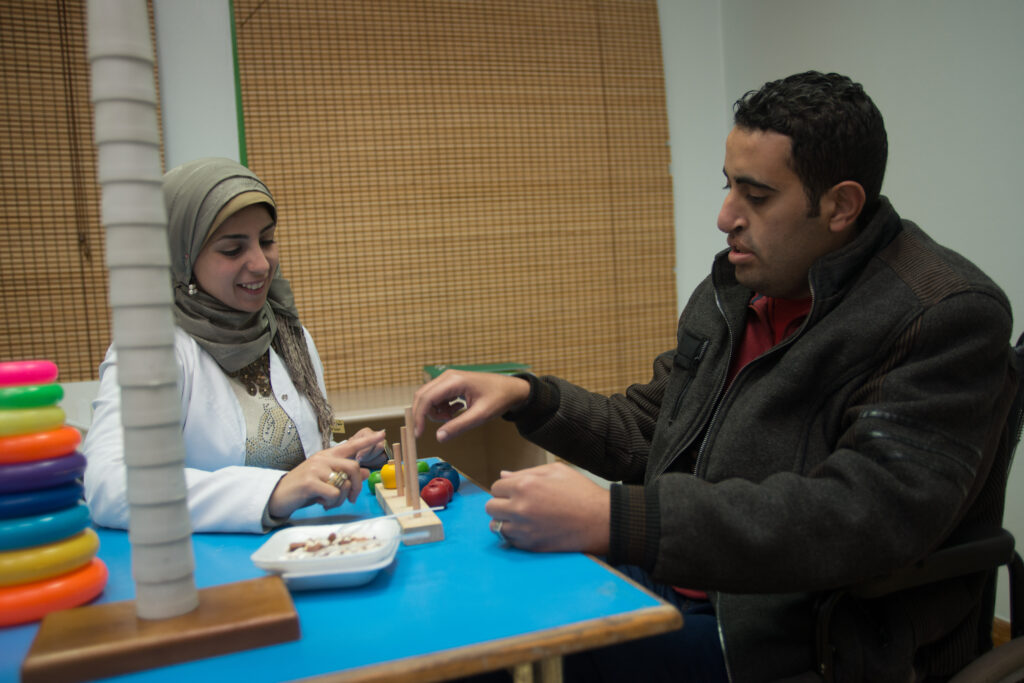Occupational Therapy

Occupational therapy (OT) is a holistic and client-centered health profession that focuses on enabling individuals to participate in the activities of everyday life.
Our Occupational therapists work with people of all ages who need assistance in improving their ability to perform tasks in their daily living and working environments. This can involve physical rehabilitation, cognitive restructuring, mental health interventions, and environmental modifications. Here’s an in-depth look at occupational therapy:
Key Concepts of Occupational Therapy
1. Holistic Approach:
- Purpose: To consider all aspects of an individual’s life, including physical, emotional, social, and environmental factors.
- Methods: Comprehensive assessments and personalized treatment plans that address the unique needs and goals of each client.
2. Activities of Daily Living (ADLs):
- Purpose: To help individuals perform essential tasks such as bathing, dressing, eating, and toileting.
- Methods: Training and adaptations to improve functional independence in daily activities.
3. Instrumental Activities of Daily Living (IADLs):
- Purpose: To support more complex activities related to independent living, such as cooking, cleaning, managing finances, and using transportation.
- Methods: Skills training, environmental modifications, and adaptive equipment.
Goals of Occupational Therapy
- Enhance Functional Independence.
- Promote Health and Well-being.
- Support Participation in Social Roles.
Common Areas of Occupational Therapy
1. Pediatrics:
- Focus: Helping children with developmental delays, sensory processing disorders, autism, and physical disabilities.
- Methods: Play therapy, sensory integration, fine motor skills training, and school-based interventions.
2. Geriatrics:
- Focus: Assisting older adults with age-related challenges, such as arthritis, dementia, and post-stroke rehabilitation.
- Methods: ADL training, fall prevention, cognitive stimulation, and home modifications.
3. Mental Health:
- Focus: Supporting individuals with mental health conditions, such as depression, anxiety, and schizophrenia.
- Methods: Cognitive-behavioral techniques, stress management, social skills training, and vocational rehabilitation.
4. Physical Rehabilitation:
- Focus: Helping individuals recover from injuries, surgeries, or chronic conditions affecting physical function.
- Methods: Strengthening exercises, joint protection techniques, pain management, and adaptive equipment training.
5. Community-Based Practice:
- Focus: Promoting health and participation within community settings, often through preventative programs.
- Methods: Community wellness programs, accessible design consultations, and advocacy for disability rights.
Techniques and Interventions in Occupational Therapy
- Therapeutic Exercises and Activities:
- Adaptive Equipment and Assistive Technology:
- Environmental Modifications:
- Cognitive and Perceptual Training
- Sensory Integration Therapy:
Benefits of Occupational Therapy
- Increased Independence: Enhances the ability to perform daily activities independently.
- Improved Quality of Life: Promotes overall well-being and participation in meaningful activities.
- Enhanced Physical and Cognitive Function: Improves strength, coordination, and cognitive abilities.
- Better Adaptation to Environment: Modifications and adaptive equipment help clients navigate their environments more effectively.
- Support for Caregivers: Provides education and support to caregivers to better assist their loved ones.
Example Occupational Therapy Interventions
1. Home Safety Assessment:
- Purpose: To identify and address potential hazards in the home.
- Method: Conducting a thorough assessment and recommending modifications, such as grab bars and ramps.
2. Fine Motor Skill Development:
- Purpose: To improve hand dexterity and coordination.
- Method: Engaging in activities such as bead threading, writing exercises, and using therapy putty.
3. Cognitive Rehabilitation:
- Purpose: To enhance cognitive functioning after a brain injury or due to a neurological condition.
- Method: Memory exercises, problem-solving tasks, and use of cognitive aids.
4. Social Skills Training:
- Purpose: To improve communication and social interactions.
- Method: Role-playing, group therapy sessions, and social stories.
